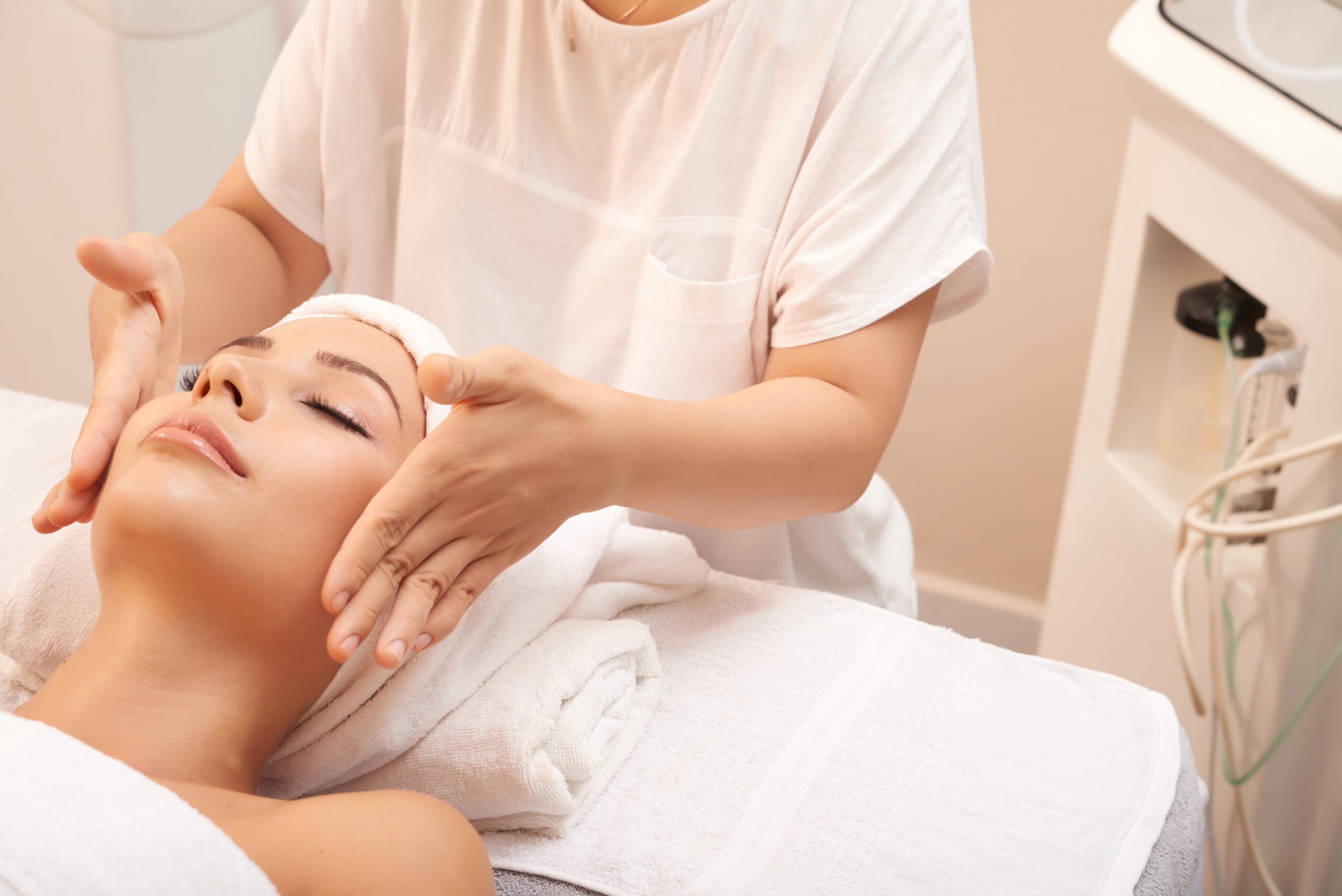
If you own a pool or spa, keeping your water chemistry in perfect balance is critical to maintaining a clean, safe, and comfortable swimming environment. The pH level is one of the most significant factors to consider among the different components of water chemistry. It has an impact on everything from water purity to sanitizer effectiveness, as well as the comfort of pool and spa users. Getting the pH balance right is an important step toward achieving optimal water quality, and understanding how spa pH works is critical for effective management.
What Is Spa pH and Why Is It Important?
Spa pH refers to the acidity or alkalinity of the water in your spa and it is measured on a scale of 0 to 14, with 7 considered neutral. Numbers less than 7 indicate acidity and numbers more than 7 suggest alkalinity. The optimal pH range for pools and spas is 7.2–7.8. This range ensures that the water is neither too acidic nor too alkaline, creating a balance that makes the water safe, comfortable, and effective to use.
Spa pH is important since it influences several aspects of water quality and pool chemical efficiency. If the pH is too low (acidic), it can cause skin and eye irritation, pool equipment corrosion, and pool liner degradation. In contrast, a high pH (alkaline) level can cause cloudy water, scale growth, and decreased sanitizer efficiency, requiring more chemicals to keep the pool clean.
The Role of pH in Pool Water Balance
In pool and spa care, pH is critical to attaining water balance, which is the overall chemical harmony of your pool’s components. Water balance involves more than simply pH; it serves as the foundation for other parameters such as alkalinity, calcium hardness, and sanitizer levels. When the pH is regulated, the efficacy of other pool chemicals improves, and the water becomes safe and comfortable.
Proper spa pH ensures that your sanitizers, such as chlorine or bromine, work at their peak effectiveness. If the pH is too high or too low, sanitizers can become less effective, leaving the water more susceptible to bacteria, algae, and contaminants. Maintaining the right pH also keeps your water comfortable for swimmers, as extremes in pH can irritate the skin, eyes, and respiratory system.
How Spa pH Affects Your Pool’s Sanitization
The relationship between pH and your pool’s sanitizer is critical. Chlorine, for example, is most effective as a disinfectant when the pH is in the ideal range of 7.2 to 7.8. If the pH drops too low, chlorine becomes overly active, which can cause skin irritation and damage to the pool’s surfaces. On the other hand, when the pH is too high, chlorine becomes less effective, meaning you’ll need to use larger amounts to keep the pool water clean and free of bacteria.
Other sanitizers, such as bromine, are similarly affected by pH. Bromine is less sensitive to pH fluctuations than chlorine but still requires a balanced pH level to work effectively. Keeping the pH in the correct range ensures that your sanitizer works at maximum efficiency, helping to reduce the risk of contamination and keeping the water hygienic.
Understanding the Ideal pH Range
As mentioned, the ideal pH range for spa and pool water is between 7.2 and 7.8. Within this range, the water is slightly alkaline, which is perfect for swimmer comfort and chemical effectiveness. Maintaining the pH level within this range ensures that the water does not irritate the skin and eyes, and also prevents corrosion of metal parts, which can result from overly acidic water.
If the pH drifts below 7.2, the water becomes acidic, which can lead to several issues. Acidic water can irritate the skin and eyes and erode pool surfaces such as tiles, liners, and metal fittings. Furthermore, when the pH is too low, chlorine becomes overactive, leading to increased chlorine consumption and possible damage to pool equipment and surfaces.
Conversely, when the pH rises above 7.8, the water becomes too alkaline. This can lead to cloudy water, the formation of calcium scale on pool walls, and reduced effectiveness of your sanitizers. High pH levels can also make it more difficult to maintain other aspects of water balance, such as calcium hardness and alkalinity. To prevent these issues, it’s important to monitor and adjust the pH regularly.
How to Test and Adjust Spa pH
Testing your spa pH regularly is essential for maintaining proper water balance. pH test strips or liquid test kits are commonly used for this purpose. These tools provide a quick and easy way to determine whether your pH is in the correct range. You should test the pH at least once a week, and more frequently if the pool is heavily used or if you’ve recently added chemicals.
If you find that the pH is outside the ideal range, adjusting it is a straightforward process. If the pH is too low, you can raise it by adding a pH increaser, commonly referred to as pH plus or soda ash. On the other hand, if the pH is too high, you can lower it by using a pH decreaser, usually in the form of muriatic acid or sodium bisulfate. Always follow the manufacturer’s instructions when adding chemicals to adjust pH, and be sure to add them gradually to avoid overshooting your target pH range.
When adjusting spa pH, it’s also important to check the water’s total alkalinity (TA), which affects pH stability. Total alkalinity measures the water’s ability to resist changes in pH. If the TA is too low, the pH can fluctuate rapidly, making it harder to maintain a balanced water chemistry. Ideally, total alkalinity should be between 80 and 120 parts per million (ppm) for stable pH levels.
The Impact of Spa pH on Other Water Chemistry Factors
While pH is a primary factor in water balance, it doesn’t work in isolation. Other chemical factors in your pool or spa water, such as calcium hardness and total alkalinity, are interconnected with pH levels. If your pH is out of balance, it can lead to problems in these other areas as well.
For example, high pH levels can increase the risk of calcium scaling, especially if the calcium hardness level is also high. This can lead to cloudy water and deposits on pool surfaces, making your pool look unattractive and potentially damaging equipment. Conversely, low pH can cause calcium to dissolve, which can reduce the calcium hardness level and potentially damage surfaces like the pool liner.
Total alkalinity plays a significant role in keeping your spa pH stable. If the total alkalinity is too low, the pH can fluctuate significantly, making it difficult to maintain consistent water quality. Keeping both pH and alkalinity in the recommended ranges ensures that your pool or spa water remains balanced, clear, and safe.
How Spa pH Affects Swimmer Comfort and Pool Equipment
When the spa pH is balanced correctly, swimmers experience maximum comfort. Skin and eyes are less likely to be irritated, and the water feels more pleasant to the touch. High or low pH levels, on the other hand, can cause stinging eyes, dry skin, and even respiratory discomfort. In addition, improperly balanced pH can lead to damage to pool equipment and surfaces, as discussed earlier. Over time, corrosive water can deteriorate tiles, filters, heaters, and plumbing, leading to costly repairs or replacements.
Maintaining the right spa pH level also helps to keep the water crystal clear. When the pH is balanced, the pool water appears clean and inviting, while improper pH levels can lead to cloudy or murky water. Cloudy water often occurs when the pH is too high, causing minerals to precipitate out of the solution and form particulate matter that makes the water look cloudy.
Best Practices for Maintaining Spa pH Balance
Maintaining the correct spa pH is an ongoing process that requires regular attention. To keep your pool or spa water in perfect balance, consider these best practices:
- Test the water regularly, especially after adding chemicals or after heavy pool usage.
- Make small adjustments to the pH as needed, rather than making drastic changes.
- Keep an eye on total alkalinity and calcium hardness to ensure overall water balance.
- Use high-quality chemicals for pH adjustment, and always follow the manufacturer’s instructions.
- Monitor the water’s appearance and smell for signs that the pH may be out of balance.
- If in doubt, consult with a pool professional to help maintain your spa’s water chemistry.
Understanding and maintaining spa pH is essential for achieving the ideal pool water balance. By keeping your spa’s pH in the proper range, you assure not just the efficiency of your sanitizers, but also the safety, comfort, and lifespan of your pool and spa. Regular testing, proper chemical changes, and understanding the relationship between pH and other water chemistry elements will help you keep your swimming water crystal-clear, comfortable, and safe. Taking the effort to properly control spa pH is one of the most beneficial investments you can make in your pool or spa.













